Anuradhapura Ancient City, the inaugural capital of Sri Lanka, was founded in the 4th century BC and served as the regal seat for 119 successive Singhalese monarchs for over 1,500 years. Today, the ruins of this ancient city are a UNESCO World Heritage Site and one of the most popular tourist destinations in Sri Lanka.
The city is located in the North Central Province of Sri Lanka, approximately 205 kilometers north of Colombo. It is spread over an area of over 40 square kilometers and is home to a vast network of ancient Buddhist temples, monasteries, and other religious sites.
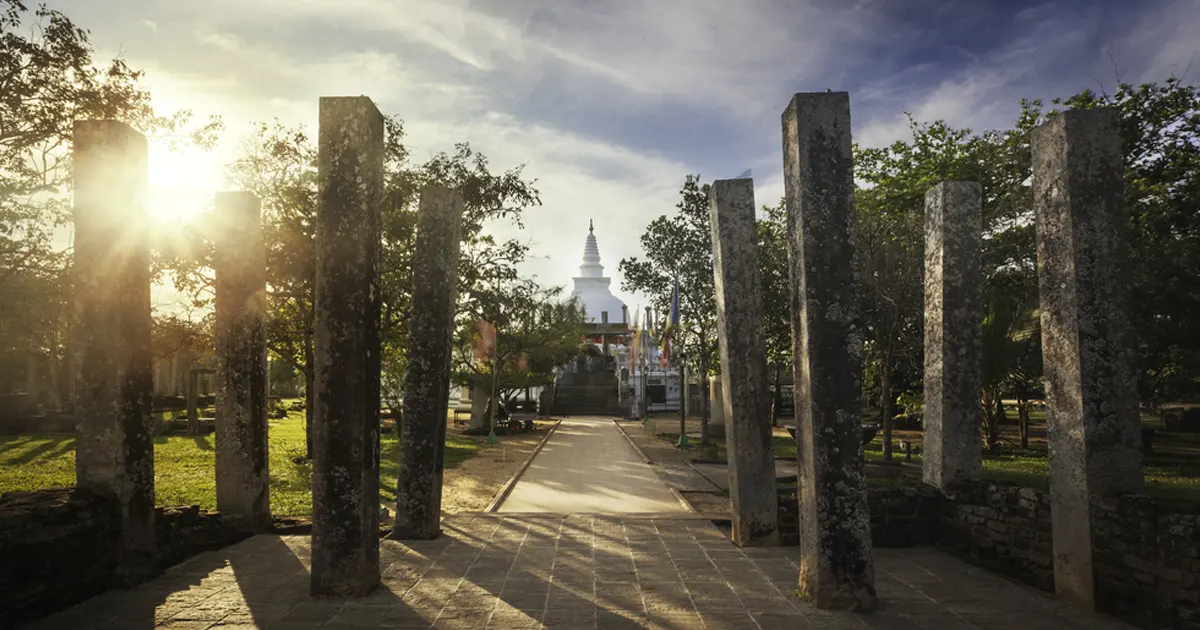
The most famous of these sites is the Sri Maha Bodhi, a sacred fig tree that is said to have been planted by Princess Sangamitta, the daughter of Emperor Ashoka of India, in the 3rd century BC. The tree is believed to be the oldest living tree in the world.
Other notable sites in Anuradhapura Ancient City include the Thuparama Stupa, the Jetavana Monastery, and the Ruvanvelisaya Dagoba. These ancient monuments are testament to the city’s rich history and cultural heritage.
History of the Anuradhapura Ancient City
The history of Anuradhapura Ancient City is a long and complex one. The city was founded in the 4th century BC and served as the capital of Sri Lanka for over 1,500 years. During this time, it was invaded several times by Indian armies, but it always managed to regain its prominence.

The city reached its zenith during the reign of King Dutugemunu in the 2nd century BC. Under his rule, Anuradhapura saw an ambitious construction boom, with many magnificent monuments being built, including the Ruwanweliseya stupa, the Mirisavetiya temple, and the Lohapasada.
Subsequent rulers continued to embellish the city, and it eventually became a bustling hub of commerce, spirituality, and culture. Anuradhapura was also a center for knowledge acquisition, and it is home to some of the oldest libraries in Sri Lanka.
The city’s decline began in the 11th century AD, when it was invaded by the Chola Empire of India. Anuradhapura was eventually abandoned, and the capital of Sri Lanka was moved to Polonnaruwa.
Anuradhapura Ancient City: Exploring the Highlights
Jaya Sri Maha Bodhi Tree (The World’s Oldest Living Tree)
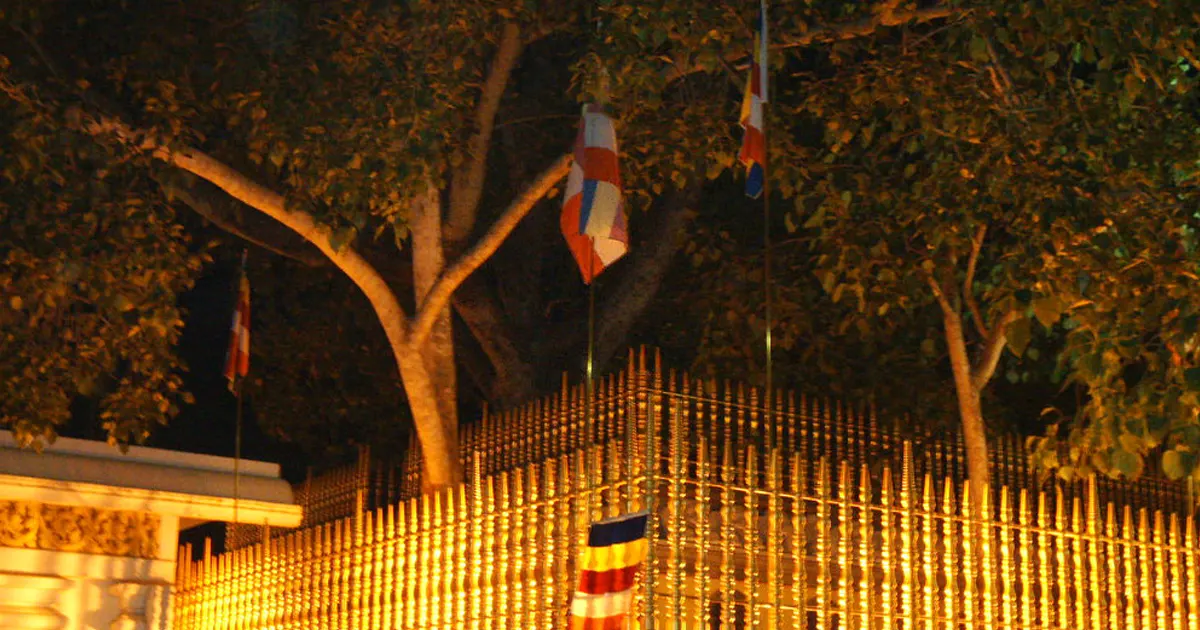
The Jaya Sri Maha Bodhi Tree is the world’s oldest historically verified tree, dating back 2,200 years. It is located in the Anuradhapura Ancient City in Sri Lanka. The tree originated from a branch of the sacred Bodhi tree in Buddha Gaya, North India, under which the Buddha himself attained enlightenment.
Princess Sanghamitta, sister of the revered Mahinda, brought this branch to Sri Lanka in the 3rd century B.C. Ever since, it has been diligently cared for by hereditary attendants and the country’s kings. The last king, Sri Vikrama Rajasingha, even ordered the construction of a protective wall around its platform.
In 1966, it was enclosed within a golden railing, further emphasizing its significance.
Lovamahapaya – Loha Prasada – The Brazen Palace
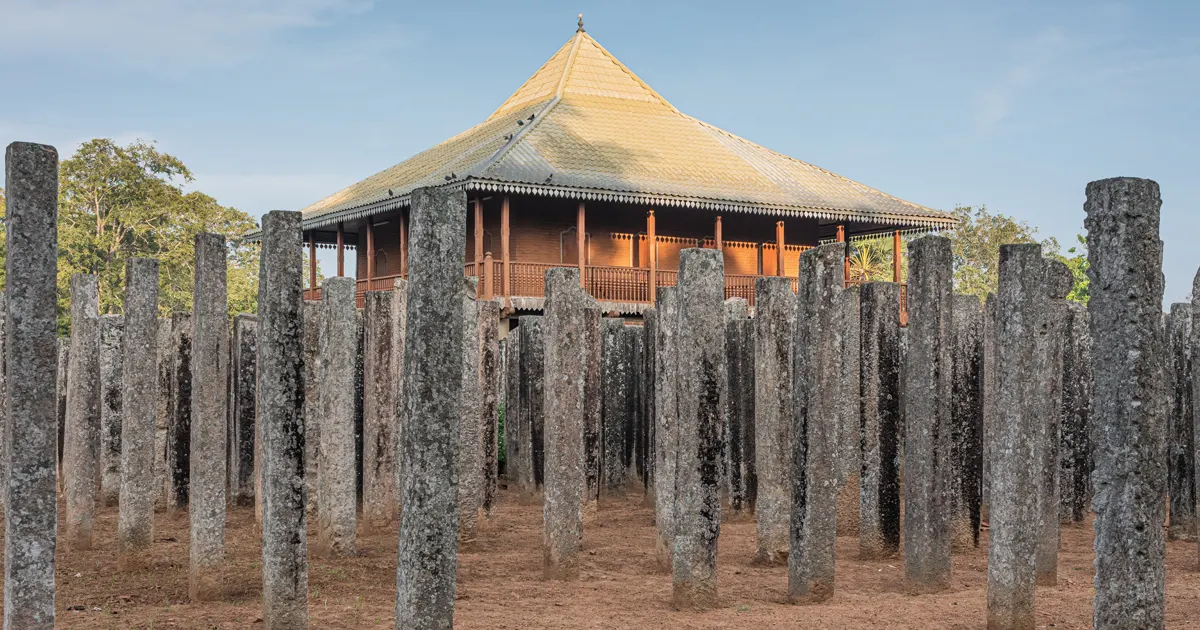
The Loha Prasada, or Brazen Palace, was a majestic skyscraper located in the Anuradhapura Ancient City in Sri Lanka. It was named after its copper roof. The palace was built by King Dutugamunu in the 2nd century BC and was destroyed by fire just 15 years later.
The site now features 1,600 pillars (40 x 40), which were added by King Parakrama Bahu the Great in the 12th century AD. The original structure had nine graded stories and boasted a remarkable one thousand rooms.
Ruwanwelisaya Dagaba (Mahathupa)
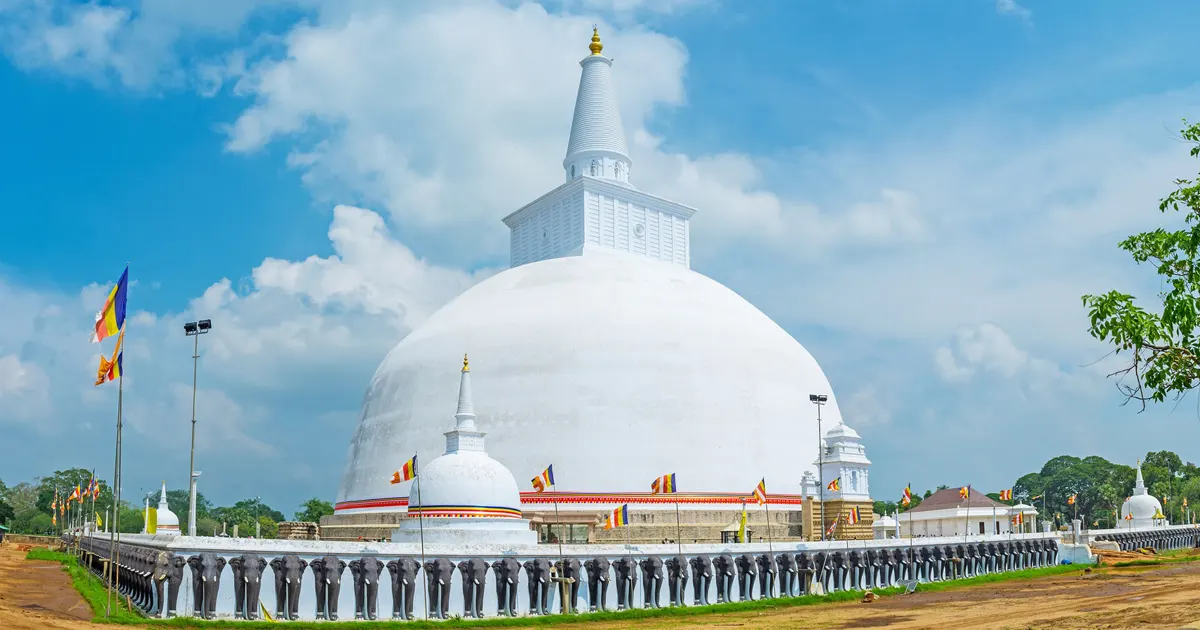
The Ruwanwelisaya or Mahathupa, or Great Thupa, is a massive stupa (or dome) located in the Anuradhapura Ancient City in Sri Lanka. It is the centerpiece of the Maha Vihara, the eminent Great Monastery. The Maha Vihara held paramount importance in Anuradhapura, as it upheld Theravada Buddhist traditions and safeguarded sacred shrines.
The Stupa (Dagaba)was built by King Dutugamunu in the 2nd century BC. It is said to have cost the king 6.4 million coins in wages, and workers were provided with food, clothing, and other extras. The stupa is made of bricks and is covered in white plaster. It is surrounded by a wall of elephants, which is said to represent the protection of the Buddha’s teachings.
The Ruwanwelisaya is said to house the bodily remains of the Buddha. It is also said to have been built to enshrine a ruby as large as a man’s fist. However, the ruby was stolen in the 16th century. Today, the stupa is topped with a 2-foot-high (60 cm) Burmese rock crystal.
This is one of the most important Buddhist sites in Sri Lanka. It is a UNESCO World Heritage Site and is a popular tourist destination.
Thuparama Dagaba
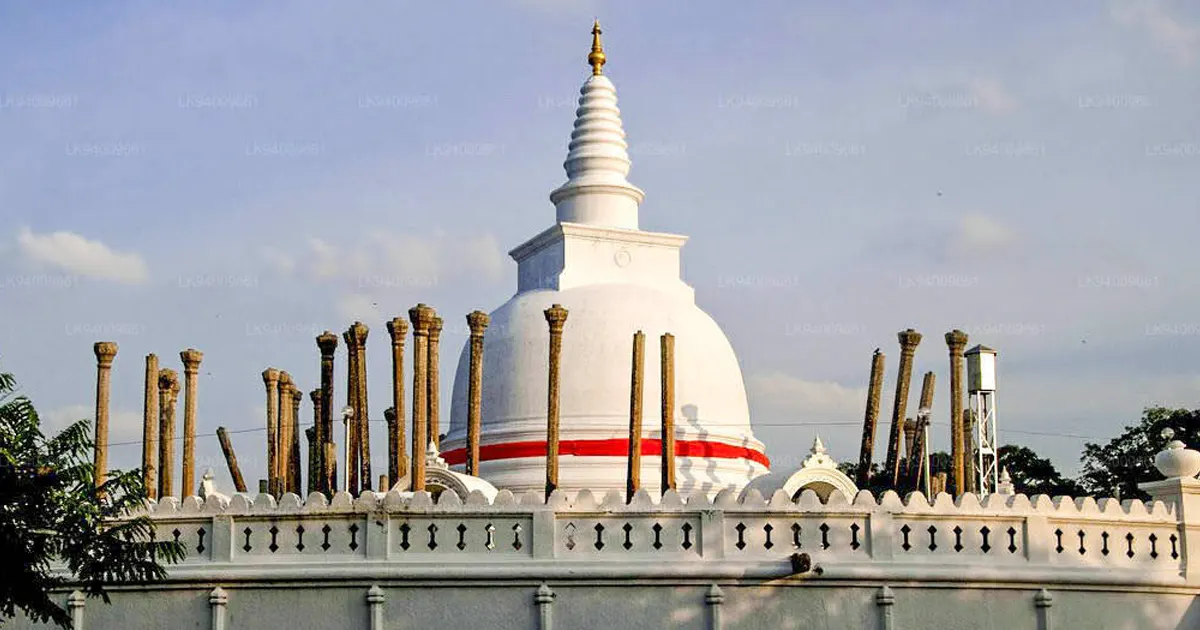
The first Buddhist structure in the Anuradhapura Ancient City in Sri Lanka was built by King Devanampiya Tissa in the 3rd century BC to enshrine the Buddha’s collarbone. The stupa originally had a “paddy heap” shape, but it was reconstructed in the 1840s to its current bell-shaped design.
It is a circular structure made of bricks and is covered in white plaster. It is surrounded by a ring of 64 monolithic pillars, which support a circular roof. The pillars are decorated with intricate carvings of flowers, animals, and other motifs.
This important Buddhist site is considered to be one of the holiest places in Sri Lanka. It is a UNESCO World Heritage Site and is a popular tourist destination.
The Thuparama is an example of the Vata Dage, or Circular-Relic-House, which is a characteristic Sinhala architectural feature. The Vata Dage is a type of stupa that is circular in shape and is typically surrounded by a ring of pillars. The Thuparama is one of the oldest and most important Vata Dage in Sri Lanka.
Jetavanaramaya Stupa
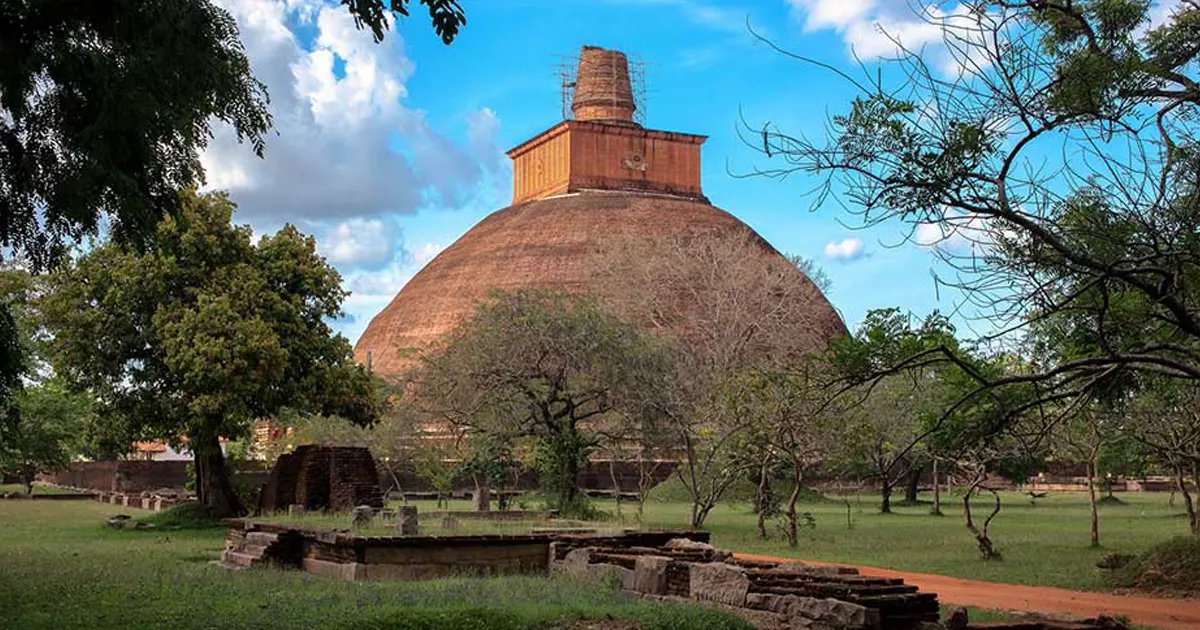
The Jetavana Dagaba is an immense brick structure located in the Anuradhapura Ancient City in Sri Lanka. It is situated to the east of the Mahathupa, the Great Stupa.
It was built by King Mahasena in the 3rd century AD. It was originally 400 feet (120 meters) tall, making it the third tallest building in the world at that time. Only the largest Egyptian pyramids, which were built two thousand years earlier, were taller.
King Mahasena was a follower of the Sagaliya sect of the Buddhist order. He built the Jetavana Dagaba in defiance of the powerful orthodox Maha Vihara order. The dagaba’s foundation is made of concrete and 26-foot-deep (12 m) brick foundations.
The Jetavana Dagaba is one of the largest and most impressive stupas in Sri Lanka.
Abhayagiri Vihara
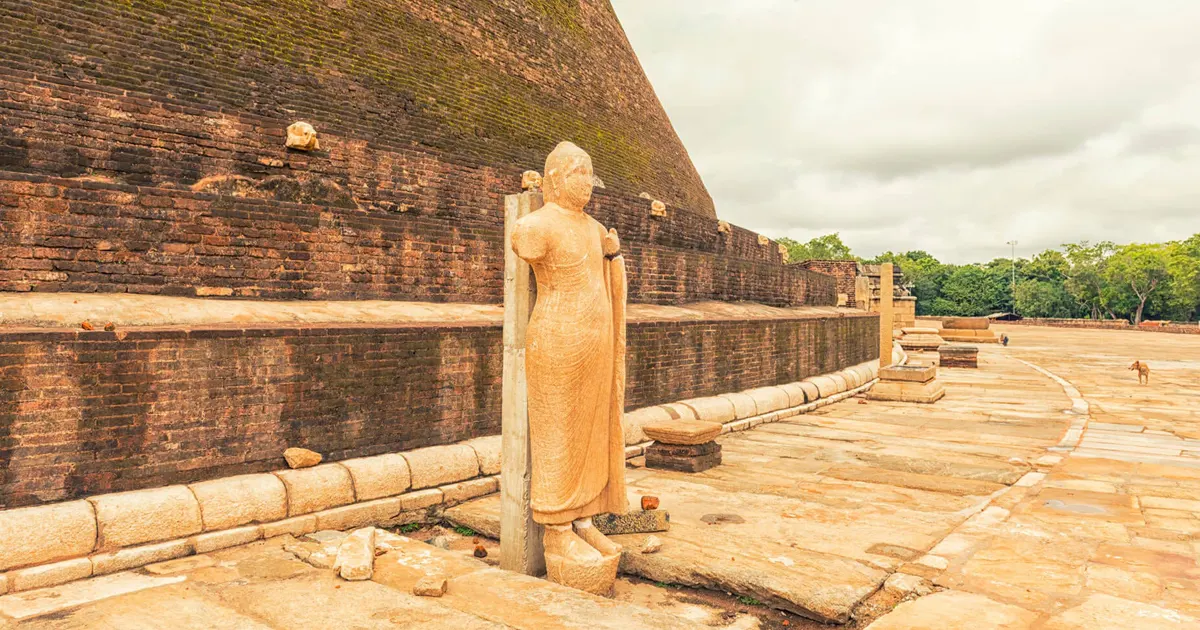
The Abhayagiri Vihara was founded in 88 BC by King Vattagamini Abhaya in the Anuradhapura Ancient City in Sri Lanka. The king was taunted by a Jain hermit while fleeing from the South Indians after losing his throne. He spent 14 years “in the wilderness” before reclaiming power and subsequently demolishing the Jain Monastery. In its place, he constructed a Buddhist monastery around the Jotiya shrine.
The temple served as the largest monastery in Sri Lanka for approximately 600 years. It spanned over 500 acres (235 hectares) and accommodated 5,000 monks. The monastery wielded considerable influence, second only to the king in terms of power.
Within the Abhayagiri grounds, visitors can marvel at the exquisite architecture and sculptures, representing some of Anuradhapura’s most beautiful treasures. Unfortunately, the chronicle of the Northern Monastery has not survived, and the Great Chronicle, authored by an orthodox Maha Vihara monk, provides limited information about its rival monastery. Consequently, the monks of the Abhayagiri were labeled as “Heretics.”
The Abhayagiri Dagaba, the work of King Gajabahu (114-136), reached a height of 370 feet (115m). Although slightly smaller than the Jetavana Dagaba, it stood as the world’s second-largest stupa. Among Buddhists, it ranks as one of the eight sacred shrines.
Samadhi Buddha Statue
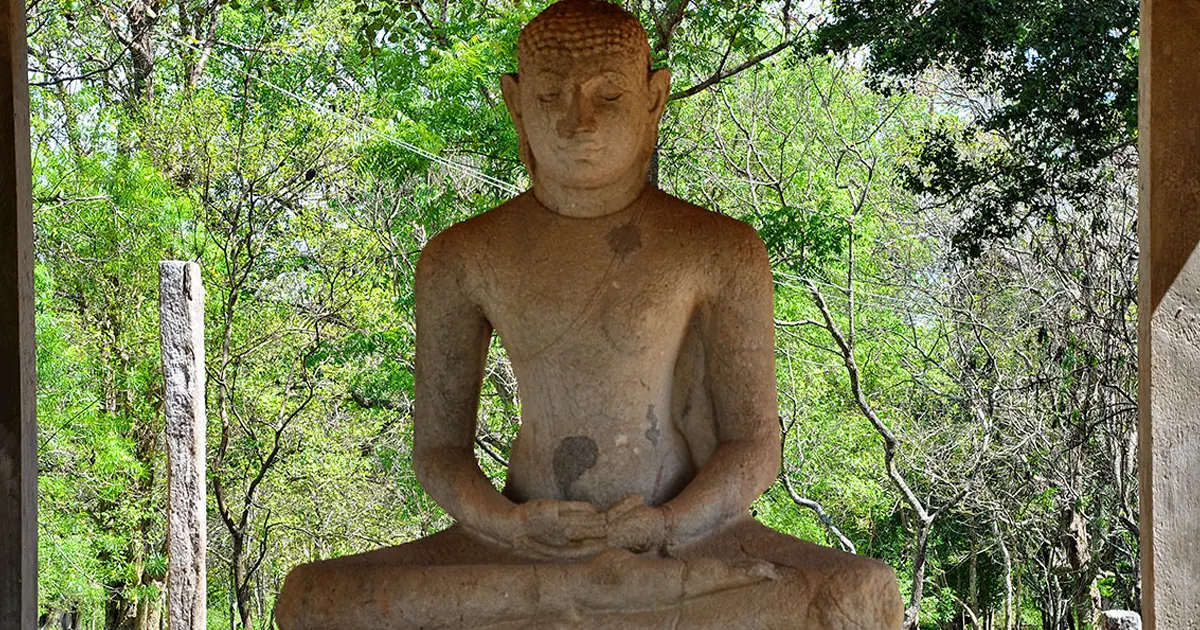
The Samadhi Buddha statue, a masterpiece of sculpture dating back to the 4th century AD, is located in the Anuradhapura Ancient City in Sri Lanka. The statue depicts the Buddha in the state of deep meditation known as samadhi. The serene expression on the Buddha’s face and the perfect posture of his body reflect the peace and tranquility of this state.
The Samadhi Buddha statue is considered one of the finest examples of Buddhist art in the world. It has been admired by people from all over the world, including the Indian nationalist leader Jawaharlal Nehru, who drew strength from contemplating the statue during his imprisonment by the British.
The Samadhi Buddha statue is a reminder of the power of meditation to calm the mind and achieve inner peace. It is a valuable cultural and religious treasure that continues to inspire people today.
The Twin Ponds
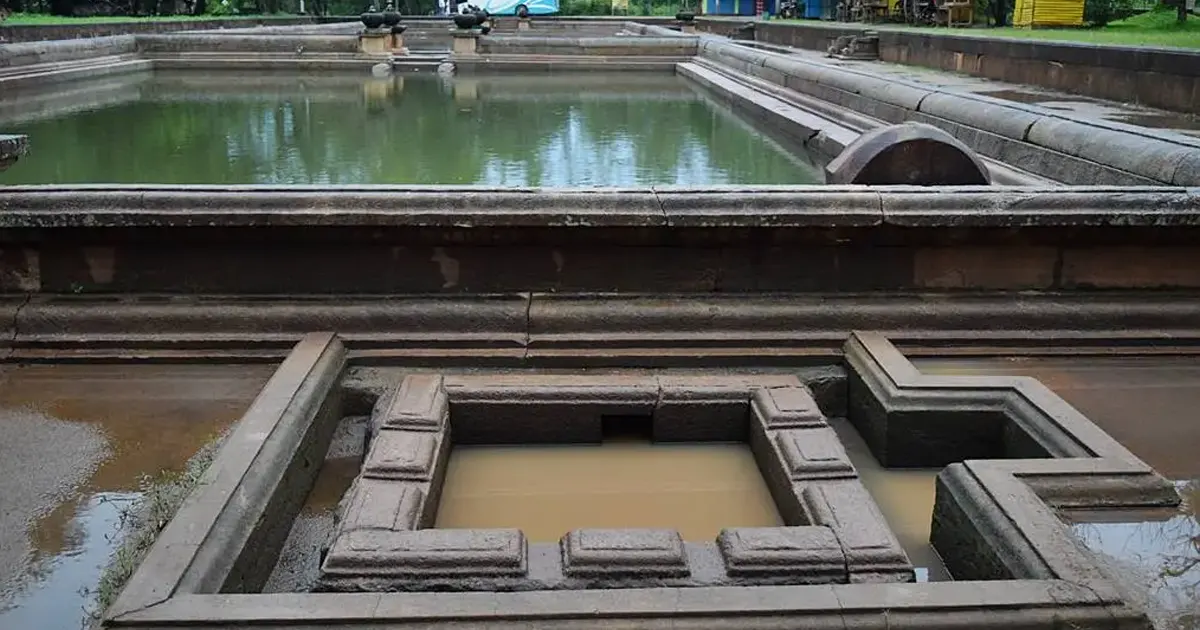
The Twin Ponds are a remarkable example of ancient Sri Lankan engineering and architecture. Located in the Anuradhapura Ancient City, they are not identical, with Pond (b) being 40 feet longer than Pond (a). The stone molding surrounding the baths and the graceful flights of steps leading to the water exude both austerity and natural beauty.
The water, flowing through an inlet, undergoes multiple cleansing and purification processes before gushing out into the pond through the spout adorned with a lion’s head. Adjacent to this spout, one can find a remarkable Naga stone, possibly one of the finest in Sri Lanka. Eventually, the water drains away from the pond, completing its cycle.
The Twin Ponds are a popular tourist destination and are considered one of the highlights of the Anuradhapura Ancient City. They are a beautiful and impressive example of the ingenuity and creativity of the ancient Sri Lankan people.
Mirisavati Stupa
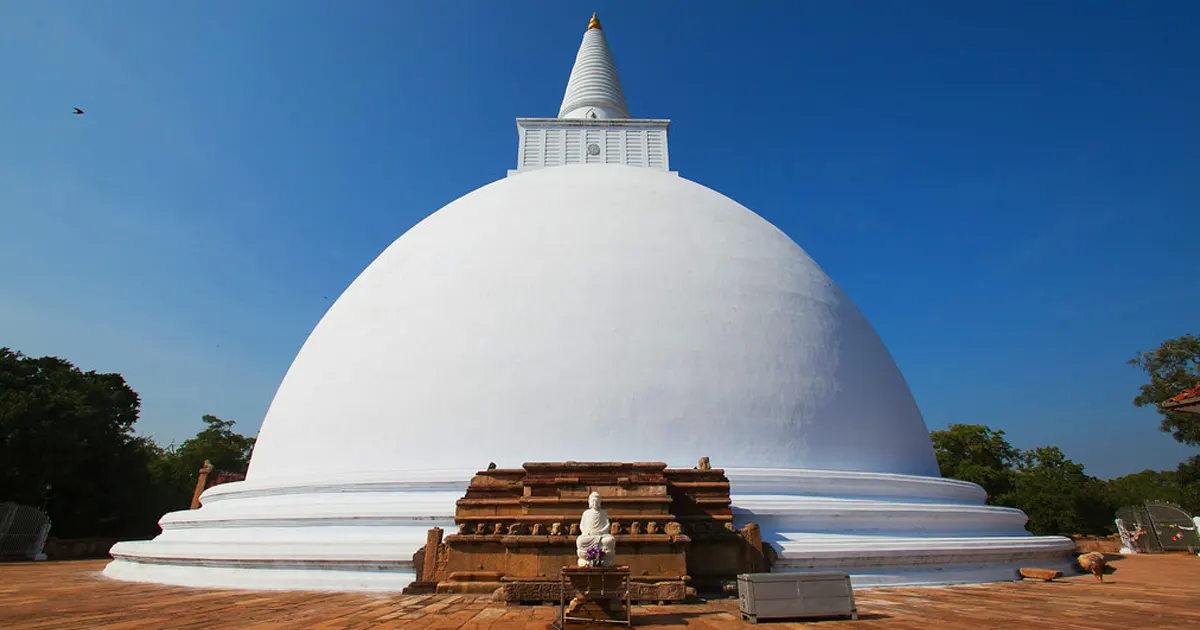
To commemorate the seventh day following his victory over South Indian invaders, King Duttha Gamini organized a water festival at the Tissa tank in the Anuradhapura Ancient City in Sri Lanka. On the nearby shore, he planted his spear—an emblem of royalty containing a Relic of the Buddha—and laid his clothes.
It was here that he constructed his first dagaba, enshrining within it his spear and its sacred Relic. The king explained that this act was his expiation for an impious deed: consuming a relish (known as “miris” in Sinhala) without considering the Brotherhood. Notably, the Vahalkadas, or frontispieces, of the dagaba exhibit striking artistic allure.
The Archaeological Department and UNESCO are actively engaged in significant archaeological research, conservation, and excavations in Anuradhapura through a project named the “Cultural Triangle”.
Other Points of Interest Near Anuradhapura
Mihintale Mountain
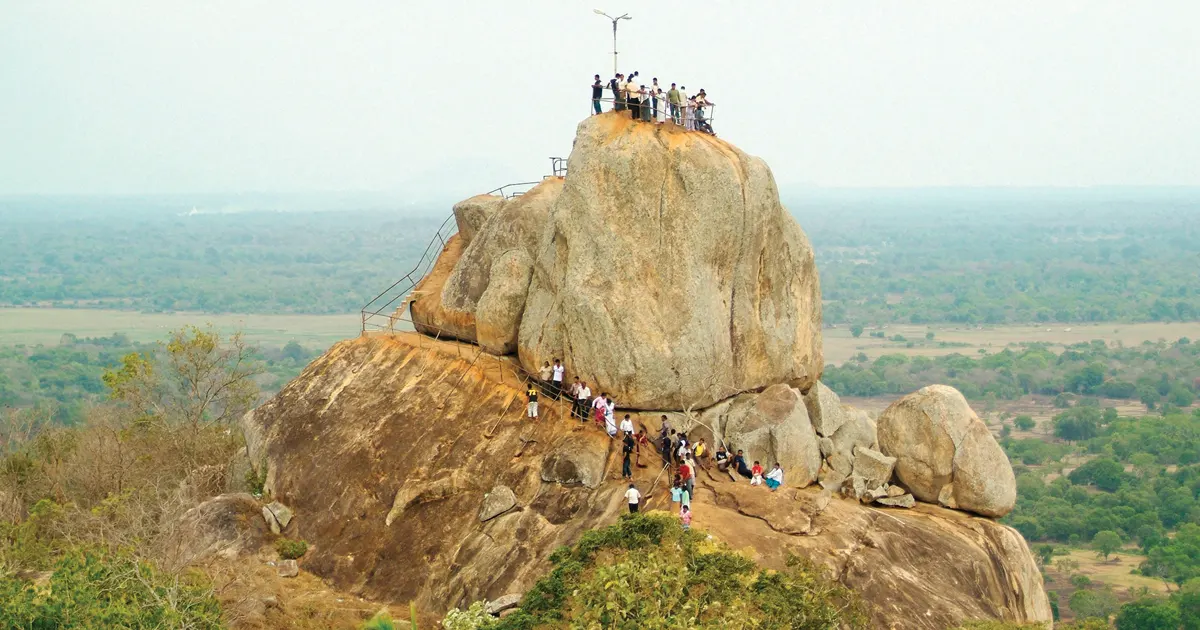
The introduction of Buddhism to Sri Lanka is believed to have occurred in 247 BC, when the Buddhist missionary Arahat Mahinda met King Devanampiyatissa on a Poson Poya Day at Mihintale, a sacred city located in the Anuradhapura Ancient City in Sri Lanka. This event marked a pivotal moment in the spread of Buddhism.
Visitors to Mihintale can explore the Meditation Rock, believed to be the location of Arahat Mahinda’s inaugural sermon. The ascent to this prominent site in Sri Lanka offers a tranquil climb, rewarding visitors with breathtaking views of both sunrise and sunset.
Isurumuniya
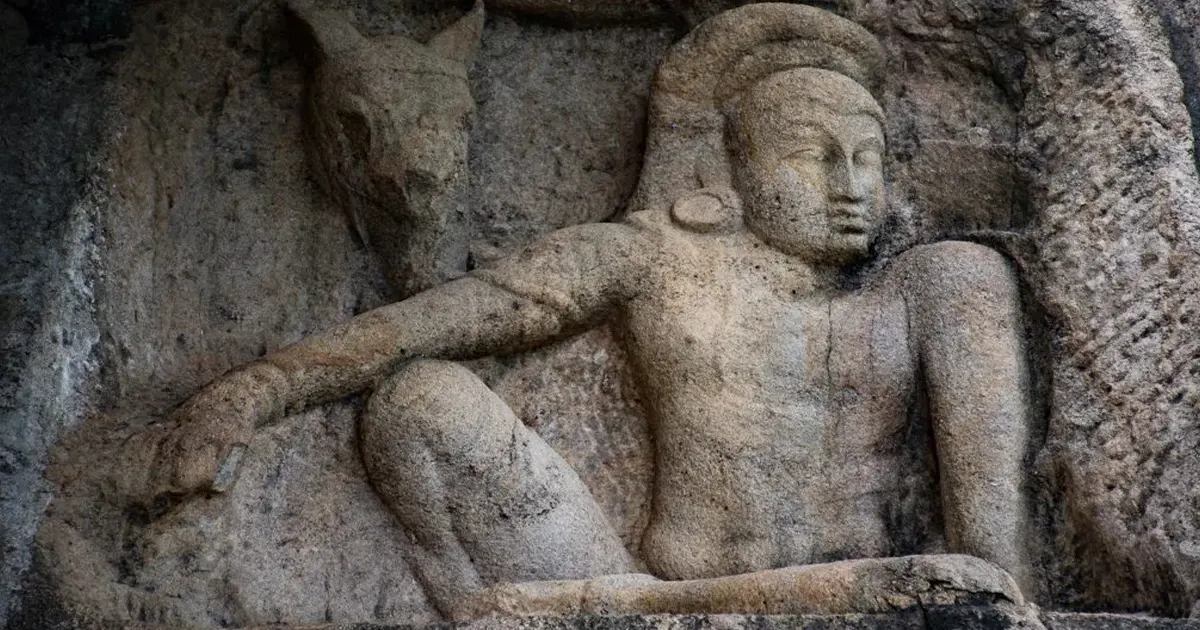
The Isurumuniya Temple is a Buddhist temple located in the Anuradhapura Ancient City in Sri Lanka. It is renowned for its captivating stone carvings, including the Isurumuniya Lovers, a Gupta-style carving of a man and woman sitting on a rock. The identity of the couple is unknown, but they are believed to be Prince Saliya Raja Kumara and Asokamala, a maiden from a lower caste. The carving is a moving depiction of love and sacrifice, and it is one of the most popular tourist attractions in Anuradhapura.
The Temple also has carvings of a horseman, an elephant pond, and a royal family. These carvings provide a glimpse into the life and culture of Anuradhapura during the 6th century.
The Isurumuniya Temple is a fascinating and beautiful place to visit. It is a reminder of the rich history and culture of Sri Lanka.
Avukana Buddha Statue
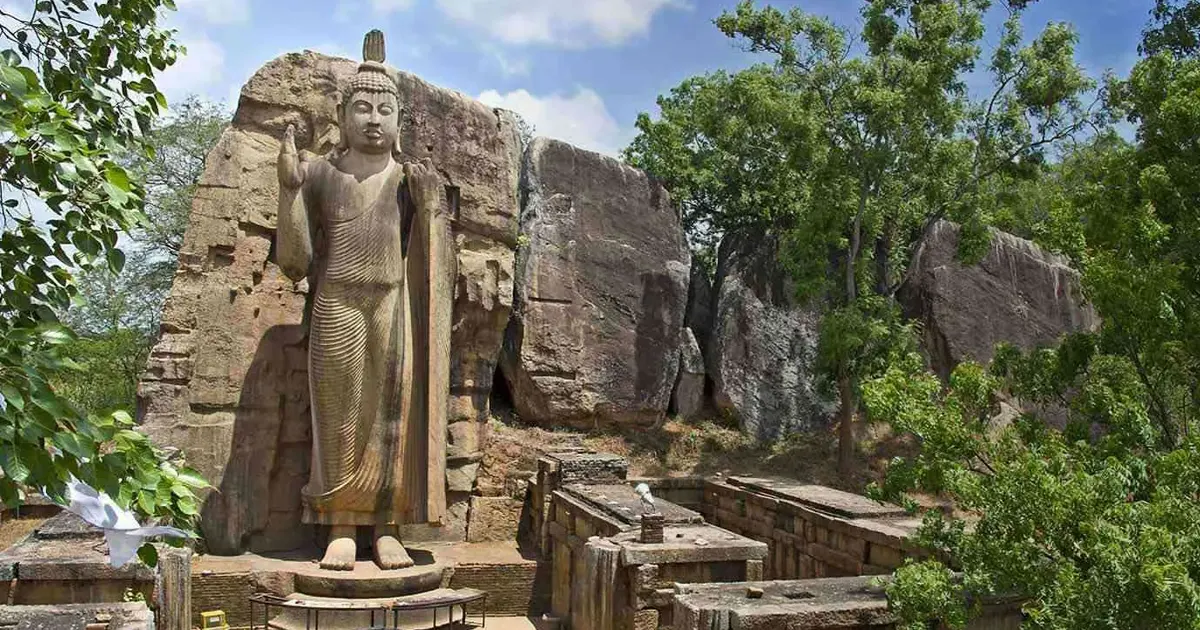
The Avukana Buddha statue is a remarkable standing Buddha statue carved into a massive rock face in the village of Avukana in Sri Lanka’s North Central Province. It is one of the tallest standing Buddha statues in Sri Lanka, reaching a height of 42 feet (including the base). The statue was carved during the reign of King Dhatusena in the 5th century AD.
The statue is beautifully and intricately carved, with every aspect of the body and robe meticulously rendered. The left hand gracefully holds the robe at the shoulder, while the right hand rests on the shoulder in the Asisa Mudra pose, which is a gesture of blessing.
The Avukana Buddha statue is a masterpiece of Buddhist art and is one of the most important cultural and religious treasures of Sri Lanka. It is a popular tourist destination and is a reminder of the rich history and culture of the Anuradhapura Ancient City.
Ritigala Rock Monastery
The Ritigala Rock Monastery is an ancient Buddhist monastery located in the Ritigala Forest Reserve in Sri Lanka. It is a protected archaeological site and is known for its well-preserved cave dwellings and monastic ruins.
The caves are arranged in a series of terraces and were used by monks for meditation and study. The monastic ruins include a stupa, a vihara, and a bathhouse.
The Ritigala Rock Monastery is a significant example of ancient Sri Lankan architecture and Buddhist monasticism.
It is a popular tourist destination and is a reminder of the rich history and culture of the Ritigala Forest Reserve.
FAQs: Visiting the Ancient City of Anuradhapura
1. What is the Ancient City of Anuradhapura?
The Ancient City of Anuradhapura is a very old city in Sri Lanka that is still inhabited today. It is a UNESCO World Heritage Site because it is so important historically and culturally. It was the capital of Sri Lanka for over 1,500 years.
2. Where is Anuradhapura located?
Anuradhapura is located in the north-central part of Sri Lanka, about 127 miles (205 kilometers) north of the capital city, Colombo.
3. What are the main attractions in Anuradhapura?
Some of the main attractions in Anuradhapura include: The sacred Bodhi Tree, Ruwanwelisaya Stupa, Abhayagiri Monastery, Jetavanaramaya Stupa, Isurumuniya Temple and many more.
4. What is the best time to visit Anuradhapura?
The best time to visit Anuradhapura is during the dry season, which is from May to September. The weather is more comfortable during this time, and there are fewer crowds.
5. Are there any entrance fees to visit Anuradhapura?
Yes, there are entrance fees for visiting the archaeological sites and museums in Anuradhapura. The fees vary for foreign tourists, so it is best to check the latest rates before your visit.
6. Can I hire a guide to explore Anuradhapura?
Yes, you can hire a local guide at the entrance to provide you with information about the history and significance of the sites. It is recommended to hire a guide to get the most out of your visit.
7. Are there any dress code restrictions when visiting Anuradhapura?
It is respectful to dress modestly when visiting religious sites in Anuradhapura. This means covering your shoulders and knees when entering temples, stupas, and monasteries.
8. Is photography allowed in Anuradhapura’s archaeological sites?
Photography is generally allowed at most sites, but some may have restrictions or require an additional fee for camera use. It is best to inquire locally or check with your guide.
9. How long should I plan to stay in Anuradhapura to explore its attractions fully?
To explore Anuradhapura’s main attractions thoroughly, plan to spend at least two full days. This will allow you to appreciate the historical and cultural richness of the city.
10. Are there accommodations and dining options in Anuradhapura?
Yes, Anuradhapura offers a range of accommodations, from budget to luxury, and there are several dining options serving both local and international cuisine. It is advisable to book your accommodation in advance during peak tourist seasons.
11. Is it safe to visit Anuradhapura?
Anuradhapura is generally safe for tourists.
12. What should I be aware of regarding local customs and etiquette in Anuradhapura?
It is important to be respectful of religious sites and traditions in Anuradhapura. This means removing your shoes before entering temples, not turning your back to Buddha statues, and refraining from public displays of affection. It is also polite to ask for permission before taking photos of locals.
13. Can I explore Anuradhapura by bicycle or on foot?
Yes, you can explore many parts of Anuradhapura by bicycle or on foot. Renting a bicycle is a popular and eco-friendly way to see the sites at your own pace.
